
First drive in the VW ID.7 GTX Tourer: Do we need an electric GTI?
Volkswagen has replaced the I in the GTI label, which stands for ‘Gran Turismo Injection,’ with an X to characterise the sporty electric versions. As a result, the sporty offshoots of the ID. family can now be recognised by the GTX label. VW first launched performance versions of the ID. 4 and ID. 5 onto the market. These were followed by the ID.3 GTX. In addition to the compact model, the latest GTX product campaign also includes sporty versions of the ID.7 and ID.7 Tourer. We took a closer look at the most powerful VW estate during a road trip in Sweden with the all-electric ID. 7 GTX Tourer.
Inspiration from GTI combustion engines
The VW designers were inspired by the GTI combustion engines for the visual differentiation inside and out. The ID. 7 GTX was given a newly designed front and rear apron. The front section has a glossy black honeycomb-look ventilation grille, while the headlights have a GTX-typical light aesthetic. At the rear, the sporty versions can be recognised by a honeycomb grille that takes up almost the entire width of the bumper.
The German carmaker describes the new ‘Kings Red Metallic’ as a typical GTX colour, which was also the colour of our test vehicle. In combination with the new 21-inch ‘Mataró’ alloy wheels, the E-Class looks significantly sportier than its less powerful offshoots. The interior boasts typical GTX features, such as heated seats with red contrasting stitching and perforated GTX lettering in the backrests. Also, GTX-specific is the multifunction steering wheel with a red centre bar and red topstitching.

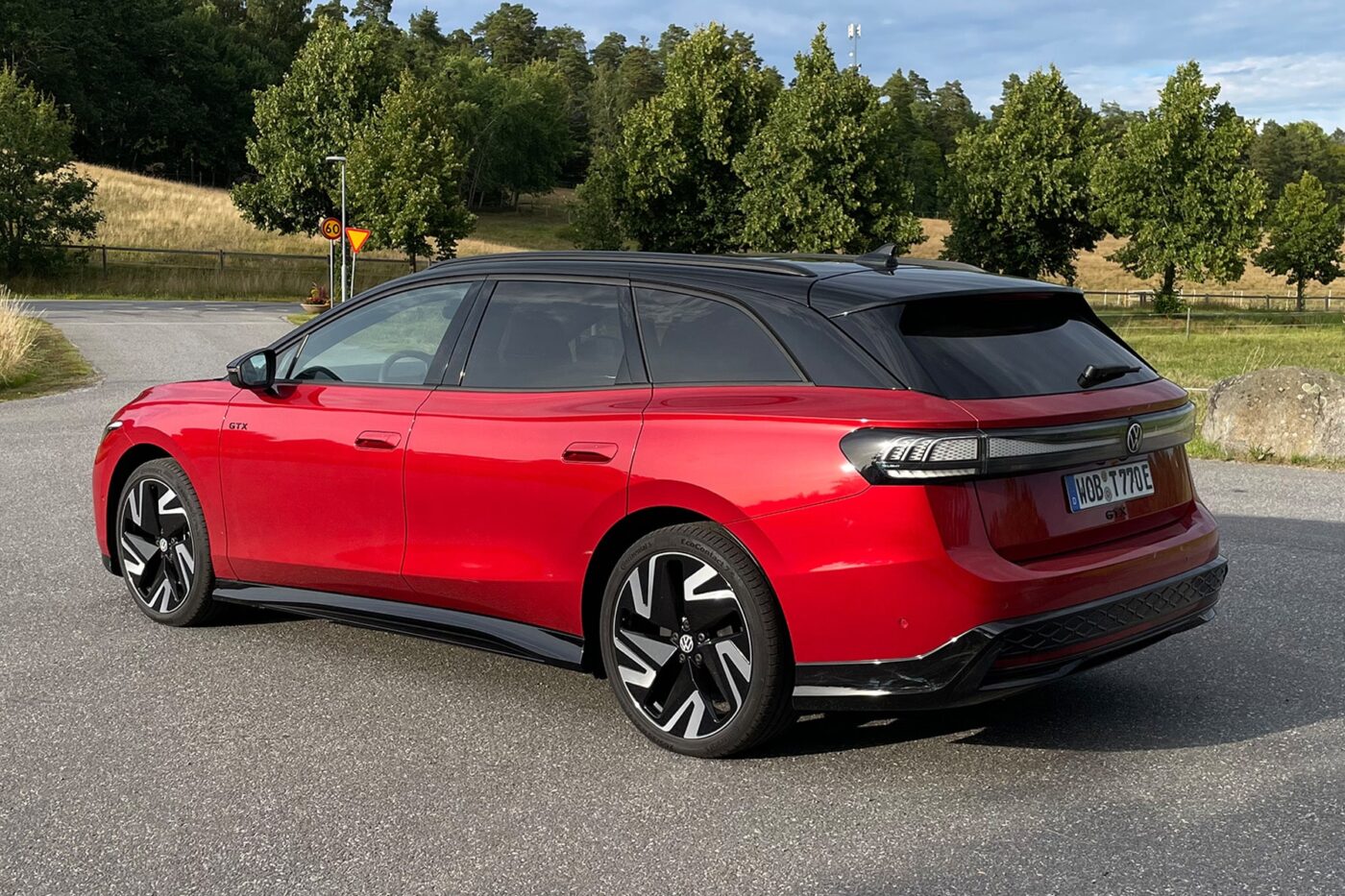
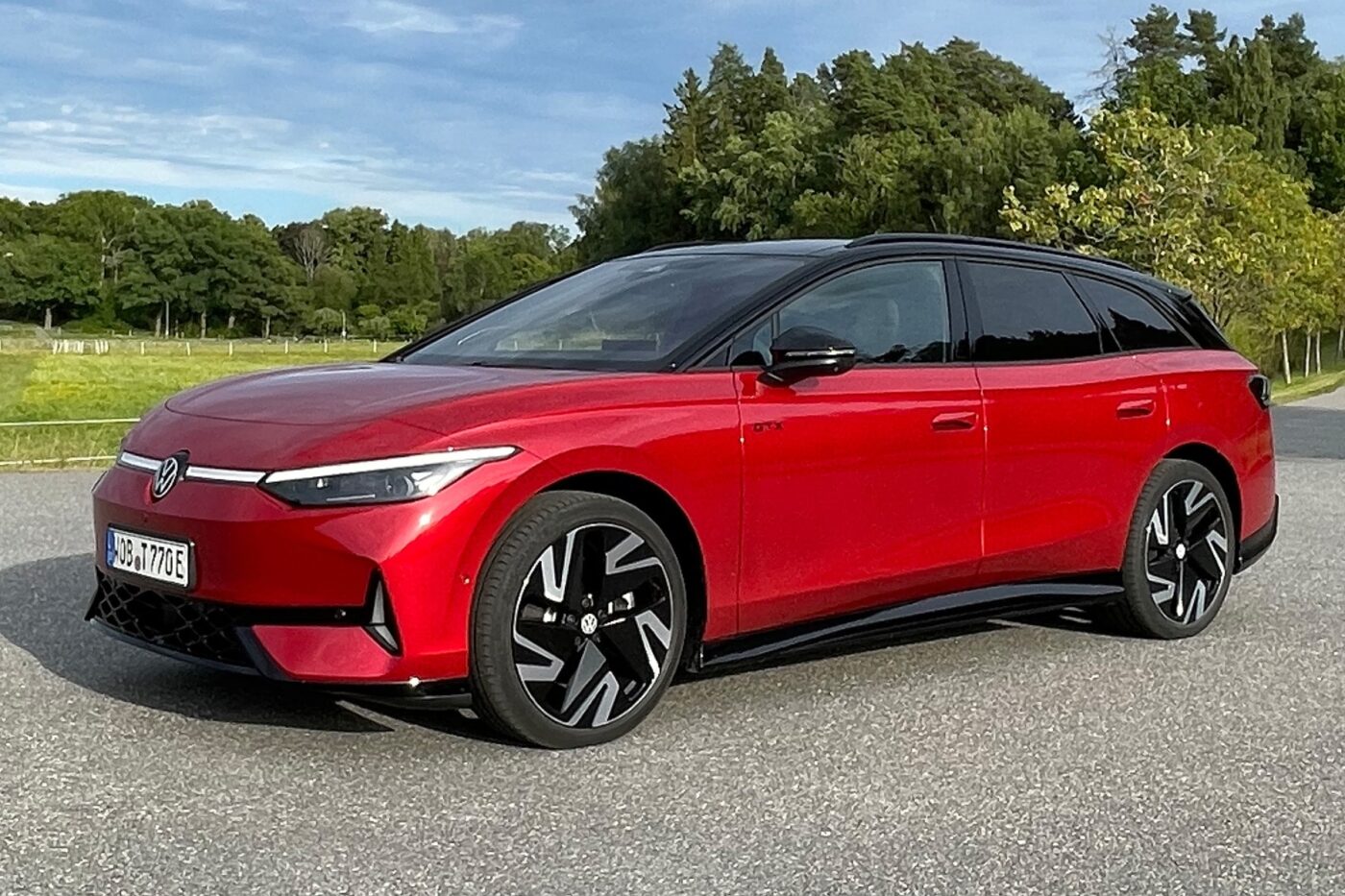





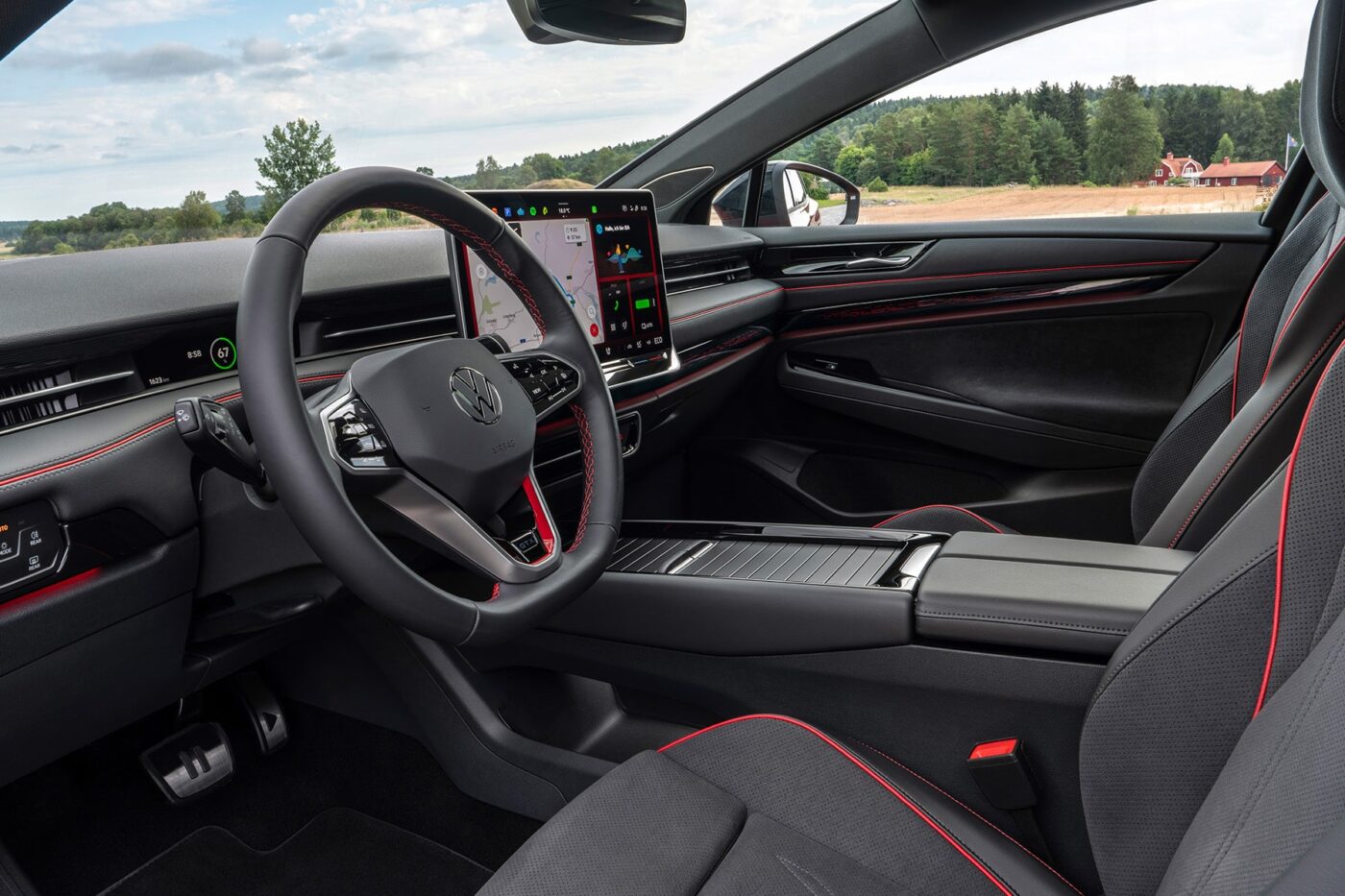
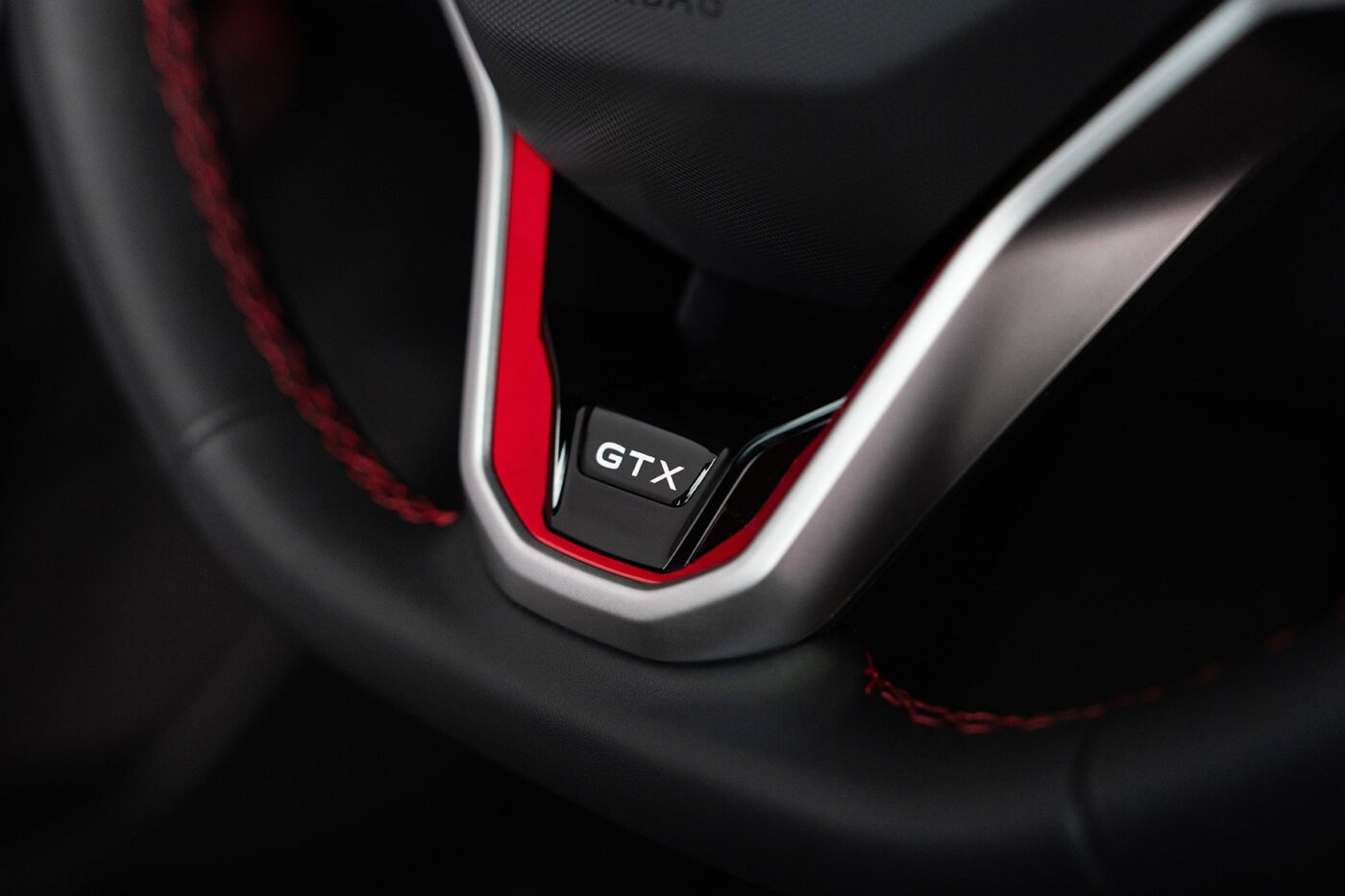



A slight increase in performance
The ID. 7 GTX is designed to convey sportiness visually and in terms of performance data. It is designed as an all-wheel drive and relies on the more efficient APP550 electric drive with 210 kW of power at the rear, while an additional 80 kW electric motor works on the front axle. The system output is 250 kW, which makes the ID. 7 Tourer GTX the most powerful VW estate.
At the same time, the increase in power compared to the Pro S, which is also equipped with the 210 kW electric motor on the rear axle, is only a meagre 40 kW. At 5.5 seconds, the GTX is also only 1.2 seconds faster than the Pro S (6.7 seconds) when accelerating from zero to 100 kph. It is hardly noticeable in everyday driving, as we discovered during our test drive in Sweden. Both variants reach a top speed of 180 kph. A differentiation from the Pro S would have been desirable, especially in Germany, where higher speeds are certainly possible.
The differences lie in the details
Nevertheless, the ID. 7 GTX was still a lot of fun to drive. Depending on the power requirement and driving situation, the front electric motor is switched on in fractions of a second. Modified all-wheel drive controller controls power distribution, and the electronic differential locks (XDS+) also intervene, which is supposed to ensure increased vehicle stability and improved load change reactions. Volkswagen also installed stiffer bushings, thicker stabilisers, and dampers with different characteristic curves in the GTX. The driving system is complemented by DCC adaptive chassis control, which is a convincing overall package.
We were always in control of the vehicle on the winding roads in Sweden. Unevenness was skilfully absorbed. The standard progressive steering contributed to the ID. 7 GTX mutated into a cornering predator. But the travelling comfort must also be emphasised as the ID. 7 GTX Tourer turned out to be a wonderfully quiet travelling companion despite its sporty design.
More range in the Pro S
That said, those who want to cover as much distance as possible with the GTX model on a single charge should forego the sporty advantages. Volkswagen states a WLTP range of up to 584 kilometres. But in practice, the value will be significantly lower. We were unable to get any practical values on the routes in Sweden but we will make up for that soon when taking the model for a longer test drive. One thing is clear: the ID. 7 GTX can manage its energy if you want it to. Only the Pro S offers a greater WLTP range, which is said to go up to 690 kilometres on a single charge.
Incidentally, both variants use the same battery. While VW relies on a 77 kWh battery for the ID.7 Pro, the energy content of the Pro S and GTX is a usable 86 kilowatt hours. The gross figure is 91 kWh. The plus is simply because there are 13 cell modules instead of 12. The larger battery can be charged more rapidly despite the higher energy content. VW specifies a maximum charging power of 200 kW, meaning the charging process from 10 to 80 per cent should take 26 minutes. Previously, the maximum charging capacity was 175 kW. We should also mention that the charging process from zero to 100 per cent is nine hours at an AC charging facility with eleven kW.
The battery can be pre-tempered for optimum conditions at the next DC charging stop. With active destination guidance, preconditioning starts automatically on the way to the next fast-charging station. However, the function can also be started manually. The infotainment system tells the driver whether the maximum charging capacity has been reached and how many kilowatts it is. Useful! In practice, the variant with active route planning via the charging stops planned by the system is likely to be used more regularly.
In any case, software and other gadgets play a more important role at VW. The German company has integrated the AirConsole gaming platform so drivers do not get bored while charging, which they certainly don’t have a lot of time for if it only takes around 26 minutes. There is also the Wellness-In-Car app, designed for relaxation during the break. All of this is made possible by software version 5.0, with which the ID. 7 rolls off the production line. More relevant in everyday life: when using Android Auto or Apple CarPlay for navigation, the directions are shown in the head-up display.
The driver also receives support from numerous other assistance systems. Lane Keeping Assist, Lane Change Assist, Exit Warning, Adaptive Cruise Control, Traffic Sign Recognition, Rear View Camera and Parking Assist are standard. VW offers ‘Connected Travel Assist’ as an option, which proactively adjusts the speed – even before bends and roundabouts. The optional IQ. Drive package includes driving and parking assistants. We were unable to test a number of the assistants extensively during our short drive. However, it can be said that Travel Assist performed very well and contributed to travelling comfort. That also applies to the ID. 7 Pro S.



Endless space
Whether Pro S or GTX – the ID. 7 Tourer offers an enormous amount of space and storage room. You can sit comfortably in both the front and rear. Legroom and headroom are among the virtues of an estate car. The purely electric offshoot of the Passat – if that’s what you want to call the ID. 7 – does justice to this.
Compared to other electric estate cars, the ID. 7 GTX Tourer offers plenty of storage space in the boot. Here are a few examples: While the ID. model has 605 litres, the BMW i5 Touring has 570 litres, the Opel Astra Electric Sports Tourer 516 litres and the Nio ET5 Touring only 450 litres. However, the VW Passat is not quite enough, with 690 litres. If the 605 litres of the ID. 7 Tourer is not enough, the GTX all-wheel-drive version can carry up to 1,200 kilos (braked, on a twelve per cent gradient). With the Pro S, it is only 1,000 kilos. However, the BEV is still short of the Passat’s towing capacity, as the latter can tow up to 2,000 kilos depending on the drive.
Conclusion
The ID. 7 GTX Tourer offers plenty of comfort but comes at a price. The base price is 63,955 euros, while the Pro S starts at 59,785 euros. In return, the GTX variant comes standard with LED matrix headlights, progressive steering, and dynamic high-beam assist. Germany is an estate car country, and the Passat is one of the most popular models for fleets. Fleet managers who want to electrify should thus consider the ID.7 Tourer. The low base prices of the combustion Passat may look tempting, but if you choose a comparable engine and equipment, you will find that the difference to its electric counterpart is significantly smaller. In addition, VW currently offers a purchase incentive of €3,570 for electric variants in Germany. But does it have to be a GTX? That’s what only each customer can decide.

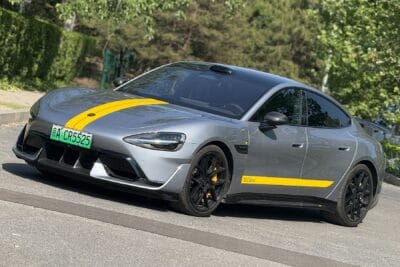


1 Comment